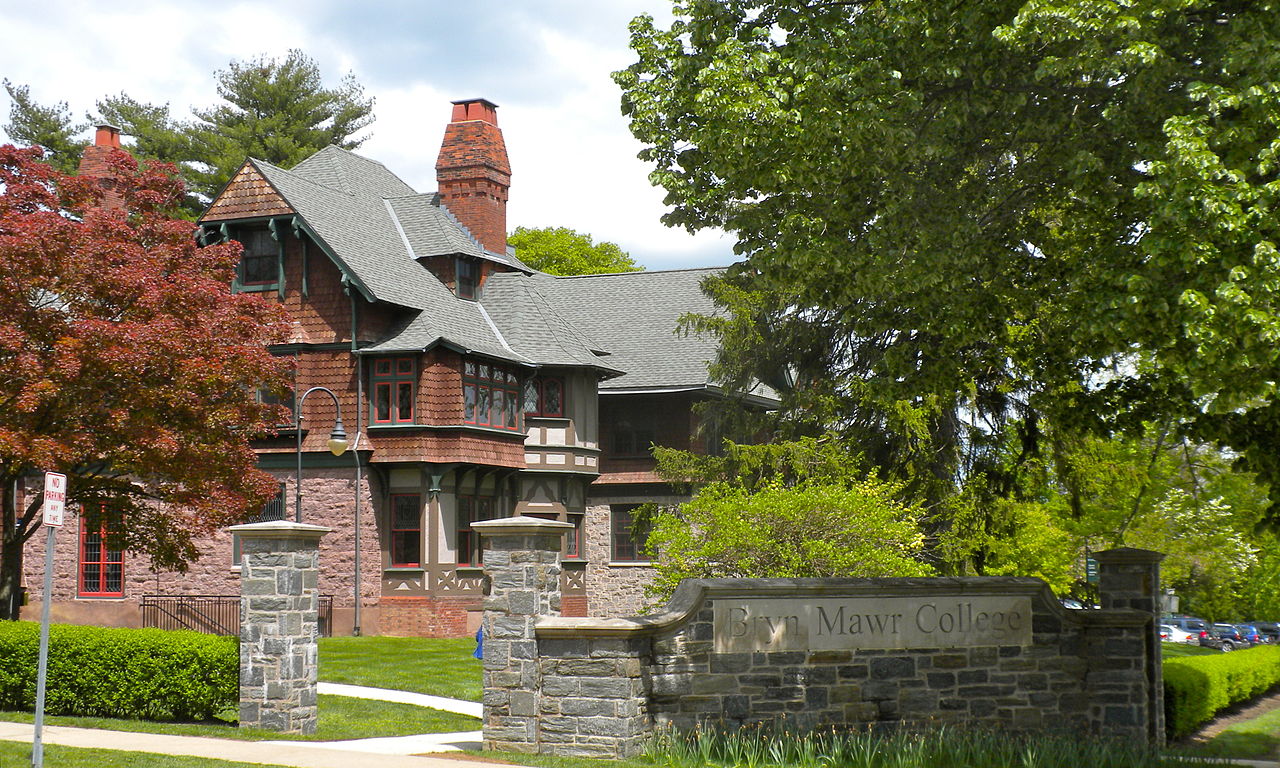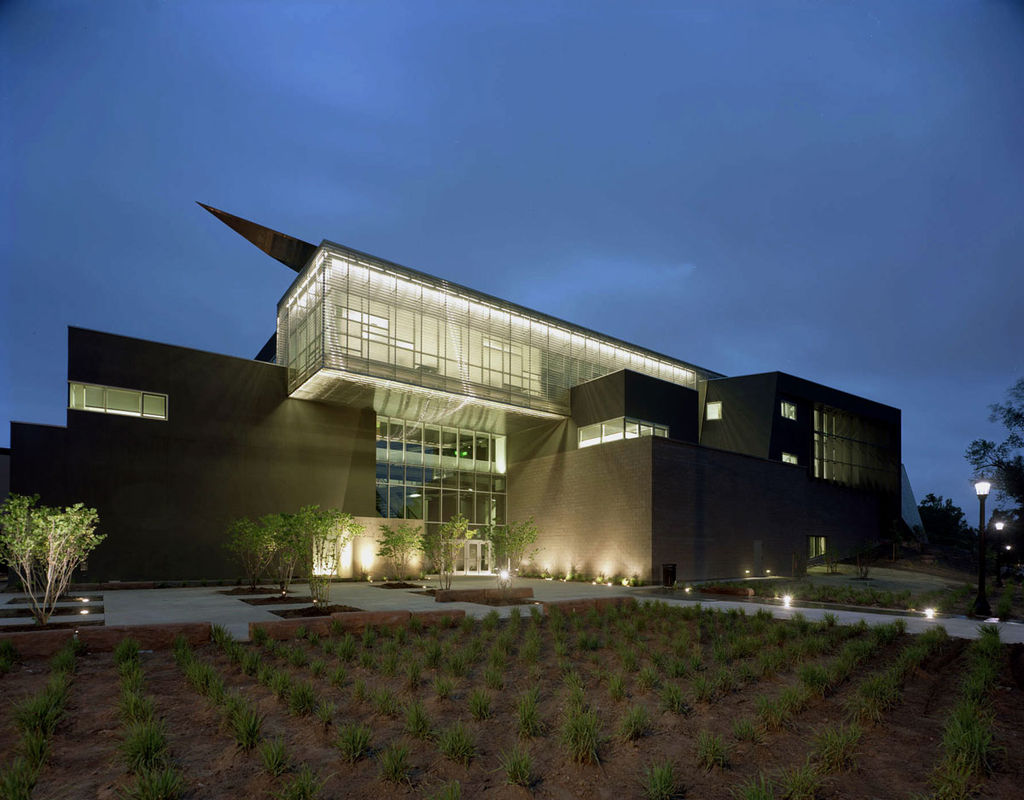 2015 Top US Liberal Arts Colleges
2015 Top US Liberal Arts Colleges
ScholarGeek scours the web to bring you the most up to date and relevant information available. One of our favorite sources for College and University ranking in the United States is College Choice.
Their rankings of the 2015 Liberal Arts Colleges are based exclusively on factors actual college freshmen said were most important to their college decision. According to the most recent nationwide survey published by the Higher Education Research Institute at UCLA , these factors include academic reputation, financial aid offerings, overall cost, and success of graduates in the post-college job market. Each of these factors were weighted equally in our ranking and data was derived from a variety of publicly available sources, including U.S. News & World Report , the National Center for Education Statistics , and PayScale.com .
35) Bryn Mawr College
Average starting salary of the other women’s colleges and enjoy the strong student/faculty ratio of 8:1. On the first Sunday after the end of finals, the campus gathers for May Day, an annual tradition in which students dress in all-white to eat strawberries and cream and perform traditional Scottish and Maypole dances.
Average net price: $ 30,940
Average starting salary: PayScale.com
34) Skidmore College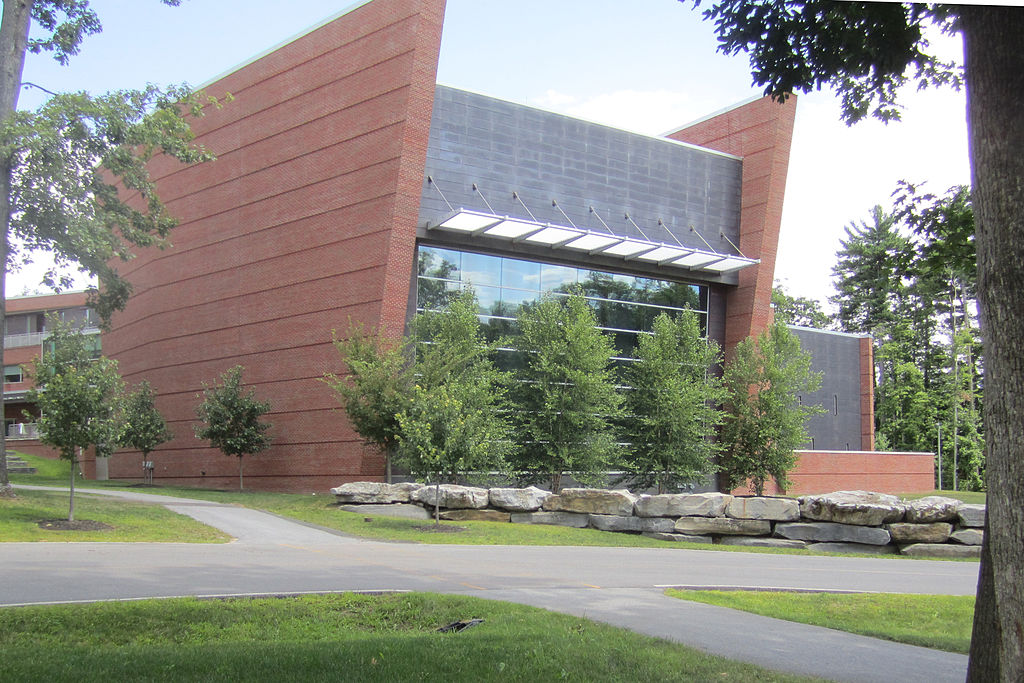
Saratoga Springs is a picturesque small city that’s been called one of the most interesting and vibrant small cities in the U.S. and is only three hours drive from New York, Boston, and Montreal. That’s great for students who don’t want to study in an urban setting, yet want access to big cities. Skidmore offers a broad curriculum, with traditional majors in the liberal arts and sciences, but also in subjects like management and business. The school is dedicated to the environment and has two “green” apartment complexes that rely on geothermal heating and cooling systems. Skidmore is listed in 2014 The Princeton Review’s 150 Best Value Colleges under “best bang for your buck,” as the average postcollege student debt (just under $23,000) is well below the national average. In addition, annually 150 students land credit-bearing internships or practicums, more than half of which are funded by Skidmore. With some of that money students save they can go enjoy themselves at the nation’s oldest thoroughbred racetrack in Saratoga Springs.
Average financial aid: $32696
Average net price: $23,804
Average starting salary: PayScale.com
33) Mount Holyoke College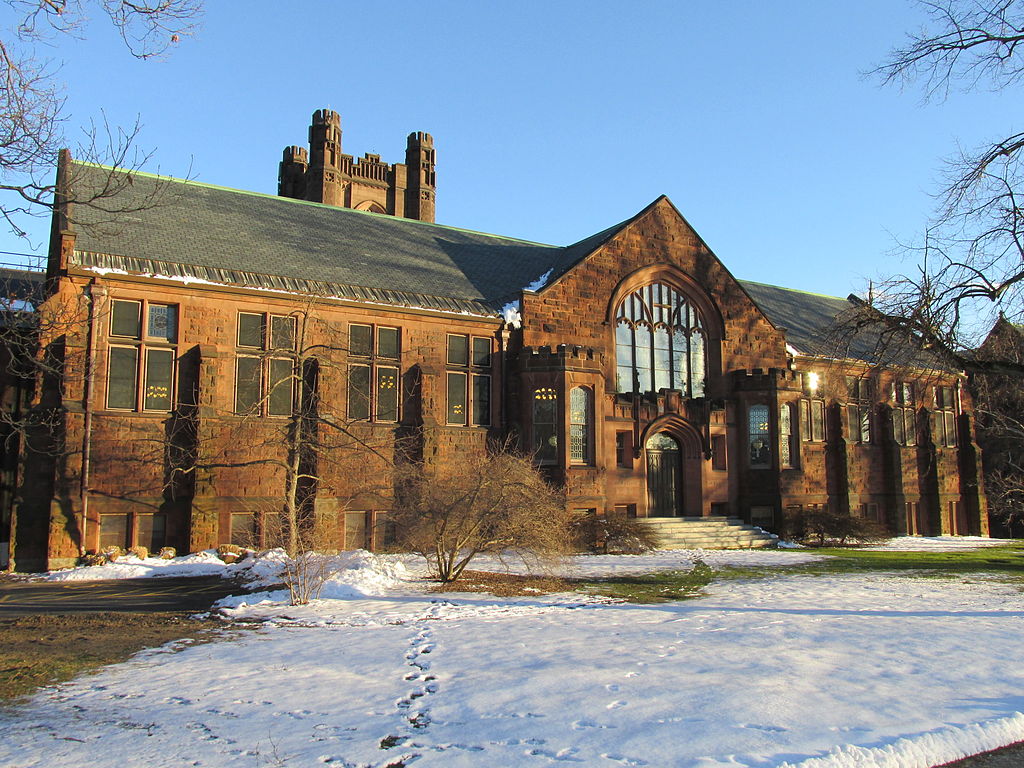
Average financial aid: $ 29,837
Average net price: $ 25,659
Average starting salary: PayScale.com
32) Reed College
The phrase “Keep Portland Weird” definitely applies to Reed College. You won’t find Greek organizations, varsity sports, or course grades at this college in Portland, OR. While the college deemphasizes grades, Reed is known for its highly intellectual—and countercultural—students and relaxed administration. Reed’s students face a rigorous curriculum with requirements such as a yearlong humanities course and a senior thesis with written and oral exam components. Reed College ranked high in two important categories by The Princeton Review 2014, number 1 in “Best Classroom Experience,” and number 2 in “Professors Get High Marks.” These rankings were based on students’ answers to several survey questions including how they rate their professors, their classroom and lab facilities, the amount of in-class time devoted to discussion, and the percentage of classes they attend. Total cost of attendance (2013–2014) is $57,780, and 50 percent of Reed students receive financial aid, and of those, 100 percent had of their demonstrated need met.
Average financial aid: $36,397
Average net price: $19,238
Average starting salary: PayScale.com
31) Connecticut College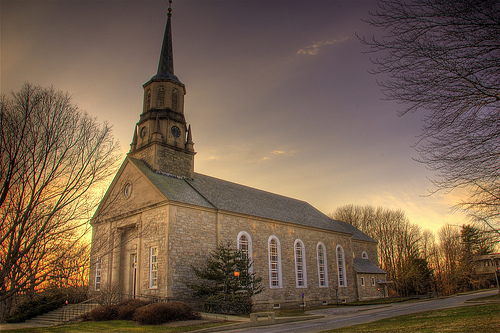
Average financial aid: $32,025
Average net price: $24,845
Average starting salary: PayScale.com

30) Colorado College
Adopted in 1970, Colorado College’s “Block Plan” is a uniquely intensive academic schedule that allows students to plunge into a different subject every three and a half weeks, rather than balancing several classes throughout a semester. Students take one course at a time with each block covering the same amount of material as a typical semester system. Each month, students get a four-and-a-half day “Block Break” to recharge before starting a new course. When students aren’t in class or are on a “Block Break” there is plenty to do. CC is located in Colorado Springs at the base of Pikes Peak, where students can hike, bike and climb. In addition, Colorado College is less than three hours from 10 different ski resorts and less than a day’s drive from seven national parks. While the majority of college aid is need-based with an average package $28,888, Colorado College does offer merit-based scholarships, as well as athletic scholarships through their two NCAA Division I athletic programs—women’s soccer and men’s ice hockey.
Average net price: $23,262
Average starting salary: PayScale.com
29) Macalester College
Average financial aid: $29,760
Average net price: $23,555
Average starting salary: PayScale.com
28) Bucknell University 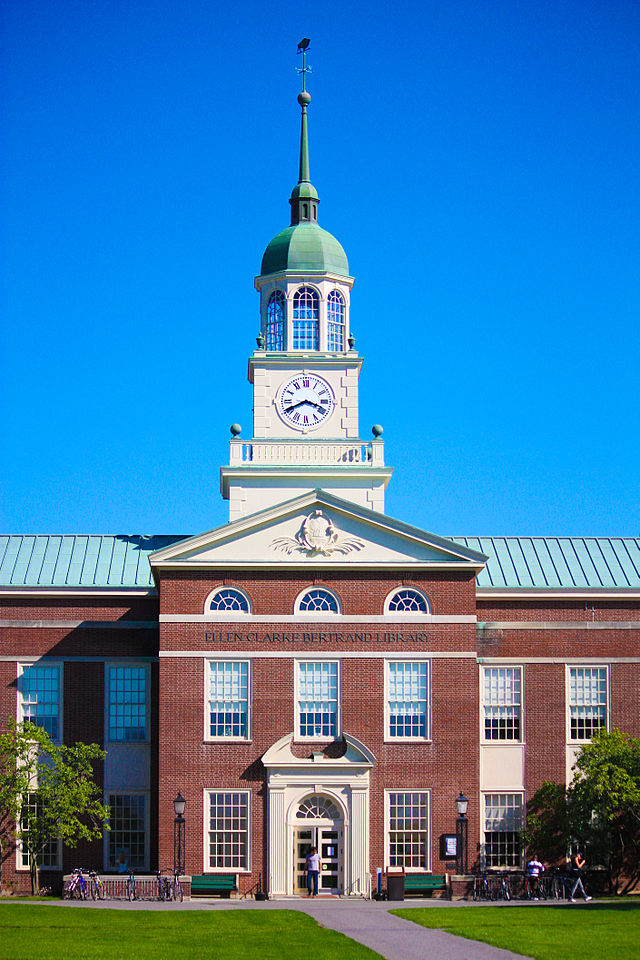
Average financial aid: $27,936
Average net price: $29,204
Average starting salary: PayScale.com
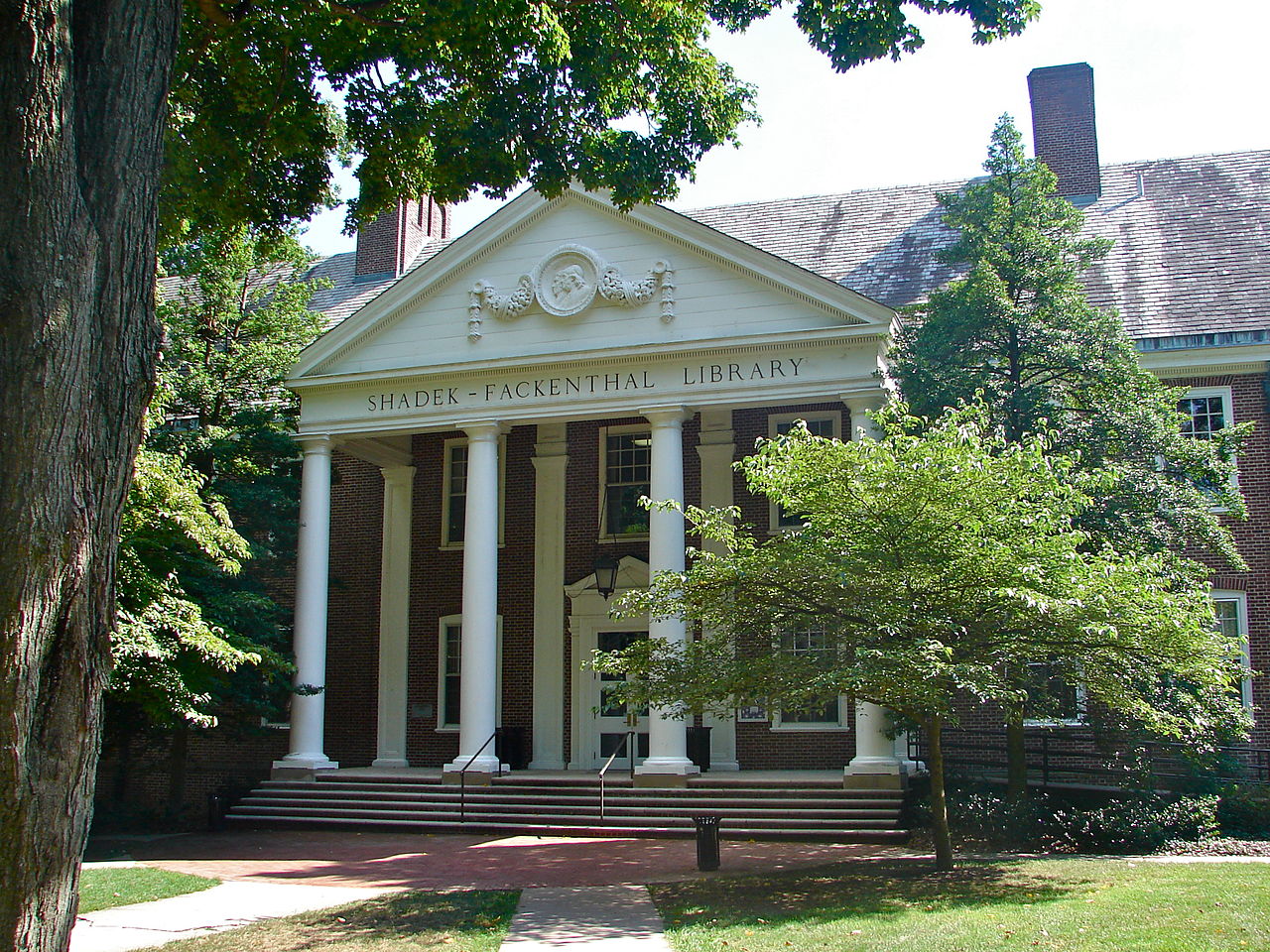 27) Franklin and Marshall College
27) Franklin and Marshall College
Located in historic Lancaster, PA, a dynamic city with a thriving arts scene, Franklin and Marshall’s need-based aid investment for 50 percent of their students underscores its commitment to enroll highly qualified students who could not otherwise afford it. Otherwise, Franklin and Marshall’s 2,324 students will pay $60,999 in total tuition and fees for the 2014–2015 academic year. Established in 1787, with a gift of 200 British pounds from Benjamin Franklin, the school later merged with Marshall College, named for former Supreme Court Chief Justice John Marshall to get it’s current name. F&M’s first trustees included five signers of the Declaration of Independence, two members of the Constitutional Convention and seven officers of the Revolutionary War. Many F&M students choose to study within the college’s strong government program. Its vast pool of notable alumni help students score high-level internships in government locally and abroad.
Average financial aid: $35,072
Average net price: $21,508
Average starting salary: PayScale.com
26) Barnard College 
Admissions to Barnard is considered most selective. The class of 2017’s admission rate was 20.5 percent, a new record low for the school, which makes it the most selective women’s college in the nation. Total cost to attend Barnard is $59,000 and the average loan indebtedness of class of 2013 was $18,428. The school has a renowned Barnard Center for Research On Women, which sponsors conferences and panels on the subjects of gender, feminism, and women’s rights. Found in the borough of Manhattan, in New York City, women at Barnard College can have a varied educational experience—a small, liberal arts school and a large, coeducational Ivy League institution. Columbia University and Barnard students can take courses at the other, live in the same residence halls, share access to twenty-two libraries, and compete together in the Columbia-Barnard Athletic Consortium.
Average net price: $23,024
Average starting salary: PayScale.com
25) Carleton College 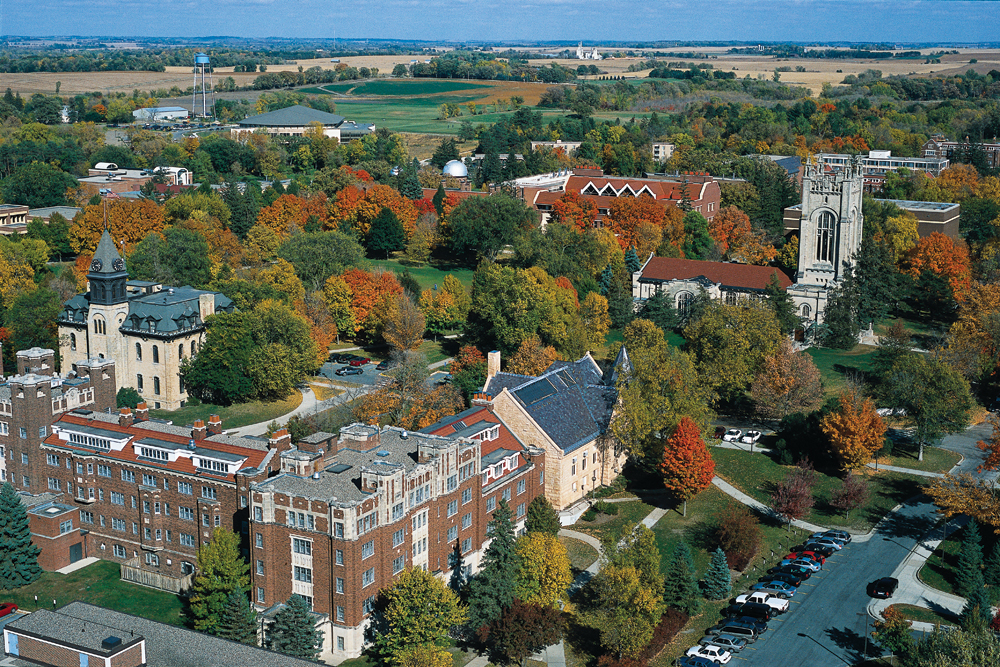
Known for its academic excellence, Carleton College has the 7th highest
Academic reputation score of 91, among our list of top 50 liberal arts colleges. Located in the historic river town of Northfield, Minnesota, Carleton’s 2,055 students are offered 37 majors, with 15 concentrations. Carleton’s expansive 1,040 acre campus includes an 880-acre arboretum. 55.7 percent of full-time undergraduates receive some kind of need-based financial aid and the average
Average financial aid package at Carleton is $26,419. The average freshman retention rate, an indicator of student satisfaction, is 98 percent, and the college also has a high 4 year graduation rate of 91 percent. Carleton requires students to complete a senior-year integrative exercise that consists of research or creative expression and publicly-presented papers often referred to as “comps.”
Average net price: $29,921
Average starting salary: PayScale.com
24) College of the Holy Cross
Average financial aid: $31,034
Average net price: $23,324
Average starting salary: PayScale.com
23) Davidson College 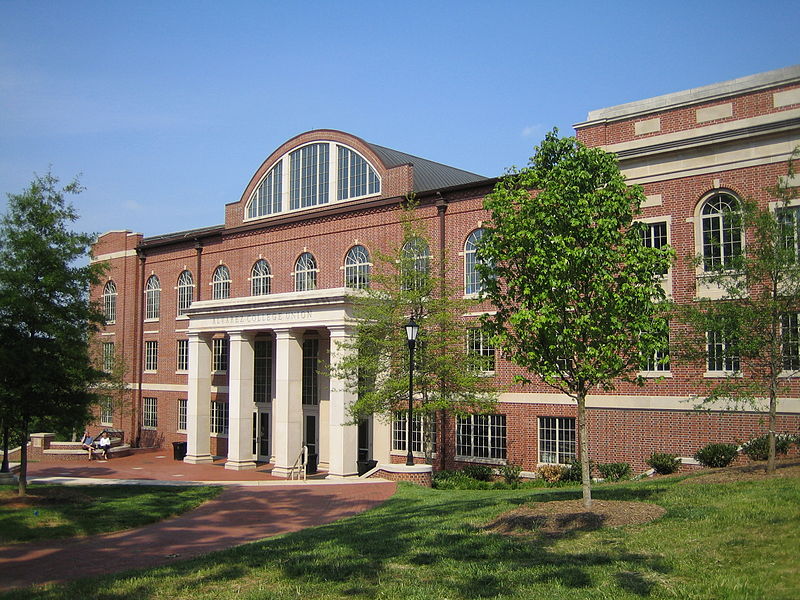
Average financial aid: $26,445
Average net price: $26,053
Average starting salary: PayScale.com
22) Smith College 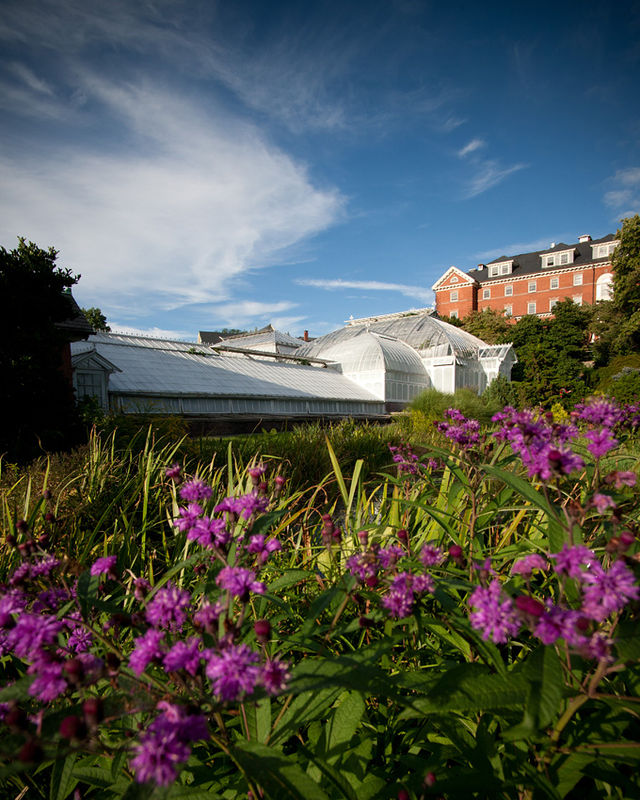
Average net price: $22,943
Average starting salary: PayScale.com
21) Grinnell College
Of the more than 4,000 U.S. colleges and universities, Grinnell College is one of the approximate 45 who meet the “gold standard” for financial aid, with its need-blind admissions policy and 100 percent fulfillment of demonstrated need. Grinnell, Iowa, with a population of 9,100, is home to Grinnell College’s 1,600 students who can earn a Bachelor of Arts in 26 major fields. Grinnell offers individualized curricular planning and advising and there are no core requirements beyond First-Year Tutorial, which allows for independent majors. This approach adheres to Grinnell’s honor system known as “self-governance.” Grinnell’s students get involved, two-thirds of students participate in community service projects, and one-third of students engage in varsity athletics. Grinnell hosts over 500 free events each year and has over 200 student organizations. Lastly, the school has been consistently ranked in the top 25 liberal arts colleges in the nation since U.S. News & World Report began it’s rankings in 1983.
Average net price: $22,116
Average starting salary: PayScale.com
20) University of Richmond
 At the University of Richmond you can earn a degree in Art & Sciences, Business, or Leadership Studies. The Bonner Center for Civic Engagement on campus provides coordinated access to community-based volunteer internship and coursework opportunities. Located in Richmond, VA, the campus is comprised of beautiful red brick buildings set around shared open lawns. Richmond’s endowment totals approximately $2.02 billion and is ranks in the top 35 nationally for university endowments, which enables the school to administer a generous financial aid program. More than 60 percent of all students receive some form of financial assistance. As of fall 2014, Virginians with family income under $60,000 receive full scholarships. The U.S. News & World Report ranked Richmond No. 2 on the list of “up-and-comers” for national liberal arts colleges that have made the “most promising and innovative changes in the areas of academics, faculty, student life, campus, or facilities.”
At the University of Richmond you can earn a degree in Art & Sciences, Business, or Leadership Studies. The Bonner Center for Civic Engagement on campus provides coordinated access to community-based volunteer internship and coursework opportunities. Located in Richmond, VA, the campus is comprised of beautiful red brick buildings set around shared open lawns. Richmond’s endowment totals approximately $2.02 billion and is ranks in the top 35 nationally for university endowments, which enables the school to administer a generous financial aid program. More than 60 percent of all students receive some form of financial assistance. As of fall 2014, Virginians with family income under $60,000 receive full scholarships. The U.S. News & World Report ranked Richmond No. 2 on the list of “up-and-comers” for national liberal arts colleges that have made the “most promising and innovative changes in the areas of academics, faculty, student life, campus, or facilities.”
Average net price: $20,301
Average starting salary: PayScale.com
 19) Trinity College
19) Trinity College
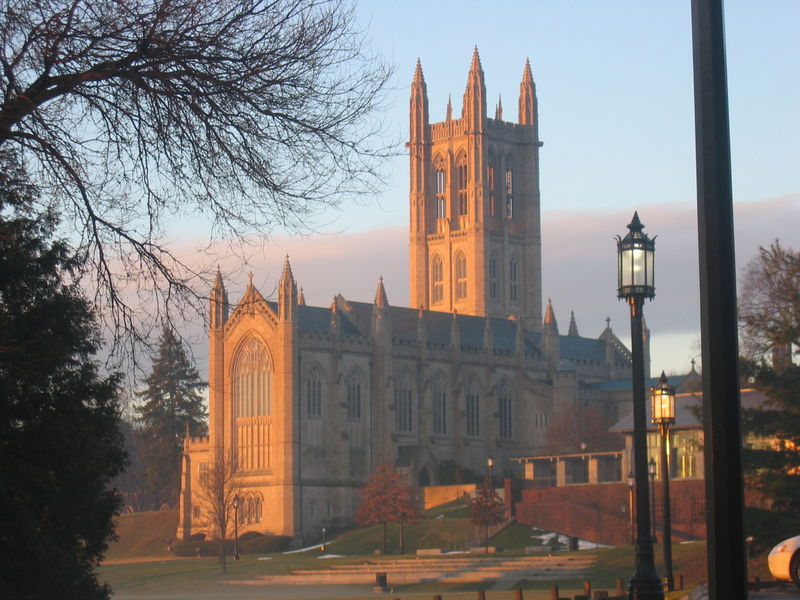 Trinity College offers an intimate academic setting in the midst of Connecticut’s bustling state capital. This busy urban setting affords Trinity’s 2,301 students access to hundreds of opportunities for internships at various organizations throughout the city. Trinity College’s 100-acre campus includes the Long Walk buildings, which are some of the oldest examples of Gothic architecture in American colleges. Trinity offers students a 10:1 student faculty ratio and 62.4 percent of its classes with fewer than 20 students. More than 90 percent of undergraduates live on the 100-acre historic campus, and Trinity has one of the largest college libraries in New England. Thirty-four percent of students compete in one The Bantam’s varsity sports, which are part of the NCAA Division III, New England Small College Athletics Conference. Tuition and fees at Trinity College are $47,510, and 100 percent of students have their financial aid needs met.
Trinity College offers an intimate academic setting in the midst of Connecticut’s bustling state capital. This busy urban setting affords Trinity’s 2,301 students access to hundreds of opportunities for internships at various organizations throughout the city. Trinity College’s 100-acre campus includes the Long Walk buildings, which are some of the oldest examples of Gothic architecture in American colleges. Trinity offers students a 10:1 student faculty ratio and 62.4 percent of its classes with fewer than 20 students. More than 90 percent of undergraduates live on the 100-acre historic campus, and Trinity has one of the largest college libraries in New England. Thirty-four percent of students compete in one The Bantam’s varsity sports, which are part of the NCAA Division III, New England Small College Athletics Conference. Tuition and fees at Trinity College are $47,510, and 100 percent of students have their financial aid needs met. Average financial aid: $37,274
Average net price: $20,301
Average starting salary: PayScale.com
18) Lafayette College
Lafayette College is private, coeducational college geared towards the liberal arts and engineering. It enrolls 2,488 students, who are offered a choice of 47 majors and enjoy a student/faculty ratio of 10:1. Nestled in the College Hill neighborhood of Easton, PA, Lafayette offers students a wide range of extracurricular options, including over 250 clubs and organizations as well as access to the Easton Farmer’s Market during warm months—billed as the nation’s oldest continuous open-air market—and skiing and snowboarding in the nearby Pocono Mountains during the winter months. The Lafayette Leopards participate as a NCAA Division I member of the Patriot League, and enjoy a storied football rivalry with nearby Lehigh University. Tuition and fees at Lafayette total $43,970, and 98 percent of students have their financial needs fully met.
Average net price: $23,905
Average starting salary: PayScale.com
17) Haverford College
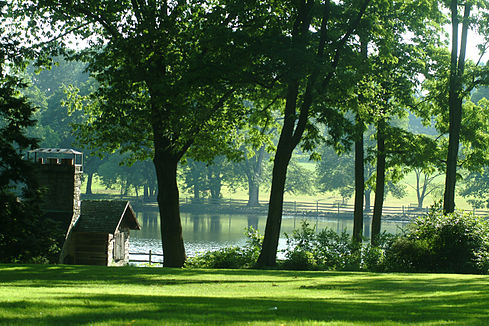 Haverford College boasts a close-knit community where 98 percent of students and 61 percent of faculty live on campus. Although the college no longer has a formal religious affiliation, the Quaker philosophy still influences campus life, with one of the oldest honor codes in the U.S. and one of the few with a social dimension. Reflections of the Honor Code include the absence of RAs in dorms, unproctored test taking, 24-hour lab access, and the lack of an admission enrollment deposit. Downtown Philadelphia is just 8 miles from the Haverford College campus, which is the oldest collegiate arboretum in the United States. Haverford students are free to take classes at Bryn Mawr and Swarthmore Colleges, and the University of Pennsylvania offers a 4 + 1 engineering program that grants a BS from Haverford and a masters from Penn in just 5 years. Fifty-three percent of students receive some form of financial aid, and more than 49 percent receive a college grant which helps to offset the cost of tuition, $46,790 (2014–2015).
Haverford College boasts a close-knit community where 98 percent of students and 61 percent of faculty live on campus. Although the college no longer has a formal religious affiliation, the Quaker philosophy still influences campus life, with one of the oldest honor codes in the U.S. and one of the few with a social dimension. Reflections of the Honor Code include the absence of RAs in dorms, unproctored test taking, 24-hour lab access, and the lack of an admission enrollment deposit. Downtown Philadelphia is just 8 miles from the Haverford College campus, which is the oldest collegiate arboretum in the United States. Haverford students are free to take classes at Bryn Mawr and Swarthmore Colleges, and the University of Pennsylvania offers a 4 + 1 engineering program that grants a BS from Haverford and a masters from Penn in just 5 years. Fifty-three percent of students receive some form of financial aid, and more than 49 percent receive a college grant which helps to offset the cost of tuition, $46,790 (2014–2015).
Average net price: $20,623
Average starting salary: PayScale.com
16) Wesleyan University
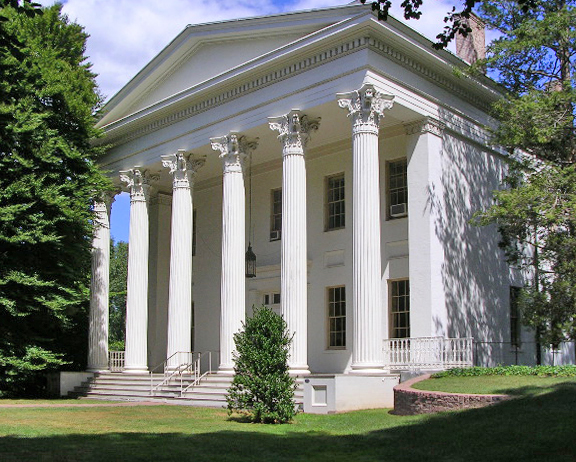 Wesleyan has been noted as one of the most productive baccalaureate colleges in the United States with respect to the number of undergraduates pursuing PhD's in various fields. Located in Middletown, Connecticut, and overlooking the Connecticut River, the total undergraduate enrollment is 2,940 students. Forty-nine percent of full-time undergraduates receive some kind of need-based financial aid. Named after John Wesley, the founder of Methodism, Wesleyan is among the oldest of the originally Methodist institutions of higher education, though now it is a secular university. At Wesleyan it is easy to get involved, the school has one of the highest students per club ratios with than 200 student organizations covering a range of interests: martial arts, outdoor activities, community tutoring, and an award winning Debate Society. Eighty-seven percent of students graduate in four years and after college the average starting salary is $43,900.
Wesleyan has been noted as one of the most productive baccalaureate colleges in the United States with respect to the number of undergraduates pursuing PhD's in various fields. Located in Middletown, Connecticut, and overlooking the Connecticut River, the total undergraduate enrollment is 2,940 students. Forty-nine percent of full-time undergraduates receive some kind of need-based financial aid. Named after John Wesley, the founder of Methodism, Wesleyan is among the oldest of the originally Methodist institutions of higher education, though now it is a secular university. At Wesleyan it is easy to get involved, the school has one of the highest students per club ratios with than 200 student organizations covering a range of interests: martial arts, outdoor activities, community tutoring, and an award winning Debate Society. Eighty-seven percent of students graduate in four years and after college the average starting salary is $43,900. Average financial aid: $37,511
Average net price: $21,160
Average starting salary: PayScale.com
15) Bates College
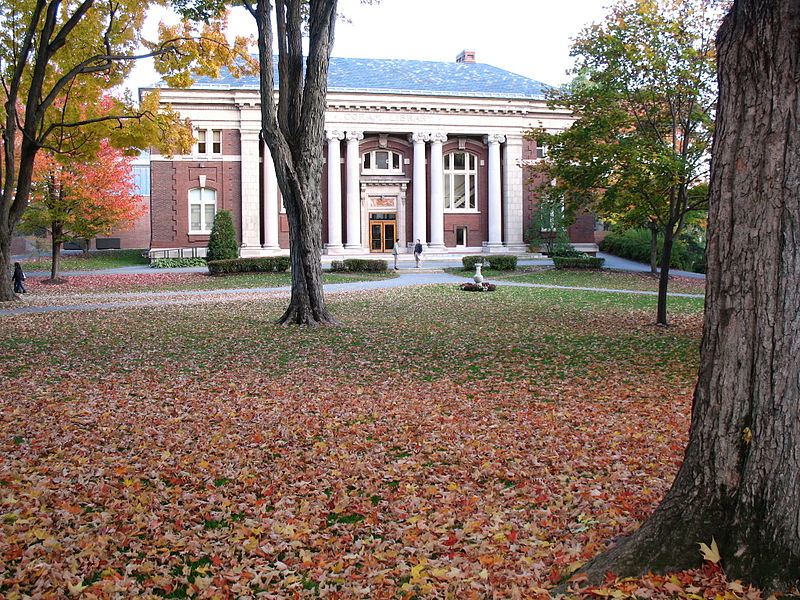 Sitting on 109 acres of wooded landscape in Lewiston, Maine, Bates College was one of the first U.S. colleges to be coeducational from its inception. Bates was also a pioneer in the SAT optional movement. Bates College enrolls 1,753 students and offers them a choice of Bachelor of Arts and Bachelor of Science degrees in 35 areas of study. The cost for tuition and fees at Bates is $45,650; however, 42.4 percent of full-time undergraduates receive some kind of need-based financial aid, which drastically offsets the cost of attendance. Ninty-five percent of students live on campus in one of the 13 dorms or 25 Victorian Houses, each housing 10 to 30 students. Most students are involved in one or more of the nearly 90 student-run clubs or organizations on campus, and the college’s location offers many opportunities for outdoor enthusiasts, such as skiing, canoeing, beaches, Lake Auburn, and natural parks are all nearby.
Sitting on 109 acres of wooded landscape in Lewiston, Maine, Bates College was one of the first U.S. colleges to be coeducational from its inception. Bates was also a pioneer in the SAT optional movement. Bates College enrolls 1,753 students and offers them a choice of Bachelor of Arts and Bachelor of Science degrees in 35 areas of study. The cost for tuition and fees at Bates is $45,650; however, 42.4 percent of full-time undergraduates receive some kind of need-based financial aid, which drastically offsets the cost of attendance. Ninty-five percent of students live on campus in one of the 13 dorms or 25 Victorian Houses, each housing 10 to 30 students. Most students are involved in one or more of the nearly 90 student-run clubs or organizations on campus, and the college’s location offers many opportunities for outdoor enthusiasts, such as skiing, canoeing, beaches, Lake Auburn, and natural parks are all nearby.
Average net price: $19,772
Average starting salary: PayScale.com
14) Bowdoin College
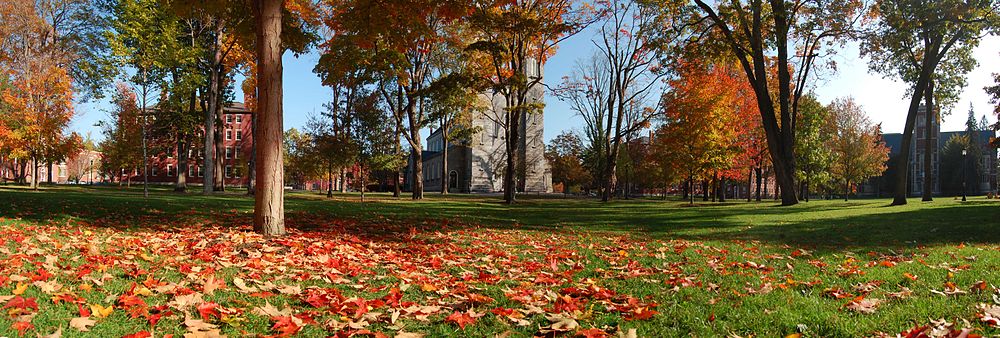 Once home to American luminaries such Nathaniel Hawthorne and Henry Wadsworth Longfellow, Bowdoin College has become established as one of the nation’s most selective liberal arts colleges. With an acceptance rate of only 14.5 percent—making it the the fifth lowest rate among liberal arts colleges in America—Bowdoin offers students a choice of 33 majors and a student/faculty ratio of 9:1. Located in a picturesque, tree-lined campus in the coastal town of Brunswick, Maine, Bowdoin enrolls 1,839 students, 46.8 percent of which receive some form of financial assistance. Bowdoin has been co-education since 1971, and in the late 90s moved to abolish its Greek fraternities, which were replaced by a housing system in which entering students are assigned to one of eight “college houses” that correlate with their first-year dormitory. According the the Priencton Review, Bowdoin has the country’s number one dining service, which has been featured in news outlets like The New York Times.
Once home to American luminaries such Nathaniel Hawthorne and Henry Wadsworth Longfellow, Bowdoin College has become established as one of the nation’s most selective liberal arts colleges. With an acceptance rate of only 14.5 percent—making it the the fifth lowest rate among liberal arts colleges in America—Bowdoin offers students a choice of 33 majors and a student/faculty ratio of 9:1. Located in a picturesque, tree-lined campus in the coastal town of Brunswick, Maine, Bowdoin enrolls 1,839 students, 46.8 percent of which receive some form of financial assistance. Bowdoin has been co-education since 1971, and in the late 90s moved to abolish its Greek fraternities, which were replaced by a housing system in which entering students are assigned to one of eight “college houses” that correlate with their first-year dormitory. According the the Priencton Review, Bowdoin has the country’s number one dining service, which has been featured in news outlets like The New York Times. Average financial aid: $32,285
Average net price: $24,282
Average starting salary: PayScale.com
13) Hamilton College
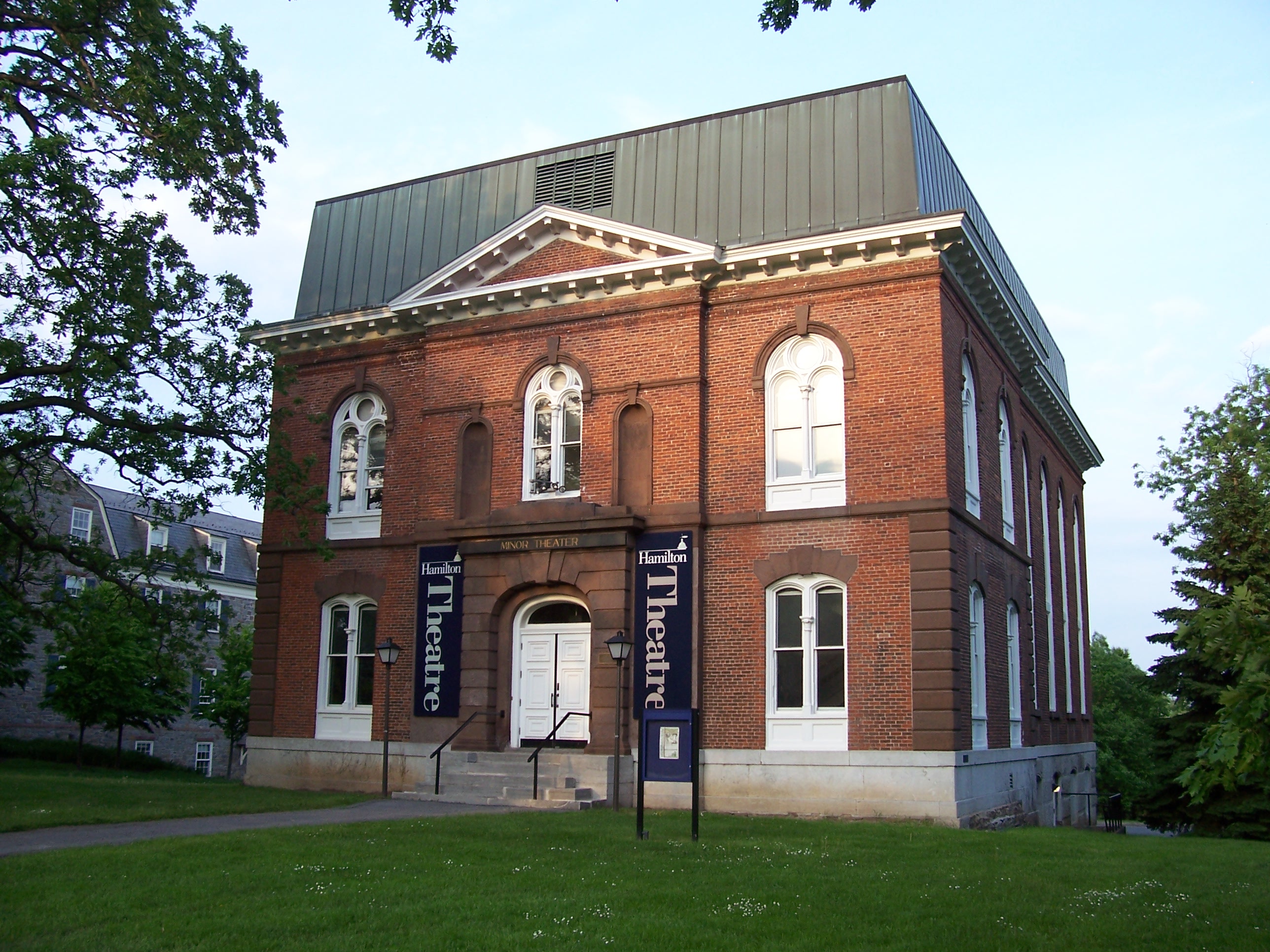 At Hamilton College, 46.5 percent of full-time undergraduates receive some kind of need-based financial aid and the average need-based scholarship or grant award is $31,856. Its tuition and fees are $46,080 (2013–2014). All students receive a Bachelor of Arts degree with 54 optional areas of study. Hamilton is well known for its “open” curriculum, for which there are no distributional requirements; students have nearly total freedom over their course selection. Nearly half of students study abroad during their time at Hamilton through 180 programs around the world or the school’s consortium programs. Hamilton is the third-oldest college in New York and was named after its former board of trustee and U.S. Secretary of the Treasury Alexander Hamilton. The current Hamilton College campus consists of the combined Hamilton and Kirkland college campuses, which has three large wooded areas that students readily enjoy.
At Hamilton College, 46.5 percent of full-time undergraduates receive some kind of need-based financial aid and the average need-based scholarship or grant award is $31,856. Its tuition and fees are $46,080 (2013–2014). All students receive a Bachelor of Arts degree with 54 optional areas of study. Hamilton is well known for its “open” curriculum, for which there are no distributional requirements; students have nearly total freedom over their course selection. Nearly half of students study abroad during their time at Hamilton through 180 programs around the world or the school’s consortium programs. Hamilton is the third-oldest college in New York and was named after its former board of trustee and U.S. Secretary of the Treasury Alexander Hamilton. The current Hamilton College campus consists of the combined Hamilton and Kirkland college campuses, which has three large wooded areas that students readily enjoy.
Average net price: $23,414
Average starting salary: PayScale.com
12) Claremont McKenna College
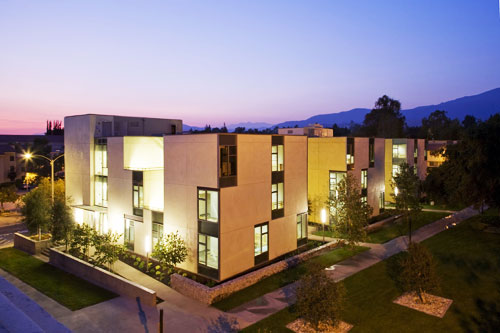 Claremont McKenna College is located at the foot of the San Gabriel Mountains, 35 miles east of downtown Los Angeles, and is part of the seven-college consortium known as The Claremont Colleges. The Princeton Review’s 2015 Edition college rankings lists Claremont McKenna College number 1 in the category “Their Students Love These Colleges.” Students at Claremont McKenna really love their school reporting “this really is a place where professors become like family.” Students spend a “good deal of out-of-classroom time” with their teachers, one venue in which this occurs is through the Marian Miner Cook Athenaeum. The athenaeum provides a cultural, social, and academic center for the interchange of ideas between CMC students, faculty, and community guests in an intimate and relaxed setting that integrates their academic and social lives. CMC is also highly selective, admitting only 13.6 percent of applicants for the 2012–2013 admissions term, this being one of the lowest acceptance rates of any college in the country.
Claremont McKenna College is located at the foot of the San Gabriel Mountains, 35 miles east of downtown Los Angeles, and is part of the seven-college consortium known as The Claremont Colleges. The Princeton Review’s 2015 Edition college rankings lists Claremont McKenna College number 1 in the category “Their Students Love These Colleges.” Students at Claremont McKenna really love their school reporting “this really is a place where professors become like family.” Students spend a “good deal of out-of-classroom time” with their teachers, one venue in which this occurs is through the Marian Miner Cook Athenaeum. The athenaeum provides a cultural, social, and academic center for the interchange of ideas between CMC students, faculty, and community guests in an intimate and relaxed setting that integrates their academic and social lives. CMC is also highly selective, admitting only 13.6 percent of applicants for the 2012–2013 admissions term, this being one of the lowest acceptance rates of any college in the country.
Average financial aid: $34,023
Average net price: $23,842
Average starting salary: PayScale.com
11) Colby College
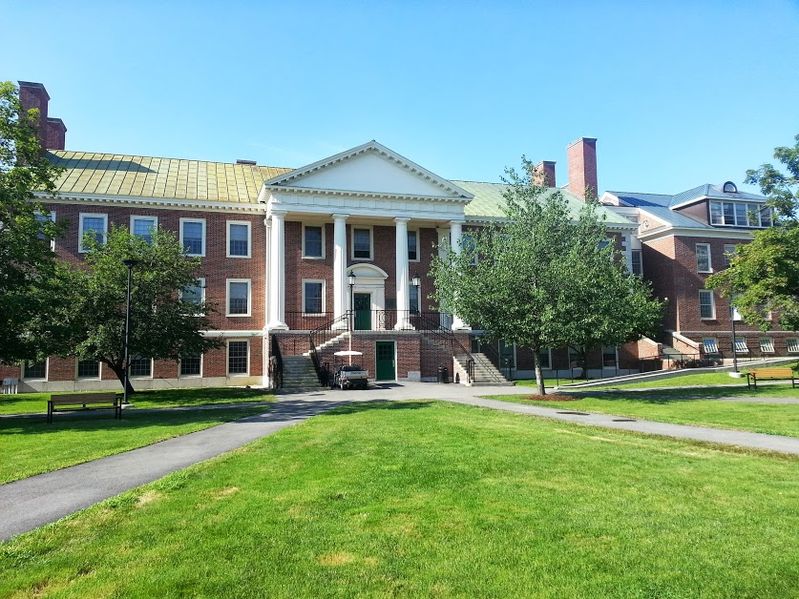 Colby has several initiatives that not only make the average net price to attend only 17,842 but also make it possible for students with financial need to graduate debt-free. Some of the financial initiatives include loans not factoring into financial aid packages, offering College funds to enrolled students who couldn’t otherwise afford to take unpaid internships and making stipends available for students to pursue academic research instead of campus jobs. Colby is located in Waterville, Maine, just 60 minutes north of Portland, Maine’s largest city. Students choose from 55 majors and 31 minors, or design their own independent major through flexible independent study programs, and participate in internships and study-abroad programs. More than two thirds of students spend time studying off-campus to extend their Colby experience around the globe.
Colby has several initiatives that not only make the average net price to attend only 17,842 but also make it possible for students with financial need to graduate debt-free. Some of the financial initiatives include loans not factoring into financial aid packages, offering College funds to enrolled students who couldn’t otherwise afford to take unpaid internships and making stipends available for students to pursue academic research instead of campus jobs. Colby is located in Waterville, Maine, just 60 minutes north of Portland, Maine’s largest city. Students choose from 55 majors and 31 minors, or design their own independent major through flexible independent study programs, and participate in internships and study-abroad programs. More than two thirds of students spend time studying off-campus to extend their Colby experience around the globe.
Average financial aid: $37,558
Average net price: $17,842
Average starting salary: PayScale.com
10) Wellesley College
 Wellesley is a private women’s college that was founded in 1870. Travel+Leisure has called the campus, “one of the most beautiful college campuses in the United States,” located in Wellesley, Massachusetts, just outside of Boston. Wellesley students have an even greater range of course offerings through a cross-registration program with MIT, in addition, students can spend a semester in another college in the Northeast as part of the Twelve College Exchange Program. The Wellesley Centers for Women at Wellesley College is one of the largest gender-focused research-and-action organizations in the world. It is home to several prominent American feminist scholars, including Jean Kilbourne and Peggy McIntosh, who conduct social science research and evaluation, develop theory and publications, and implement training programs on issues that put women’s lives and women’s concerns at the center. Paying an average net price of just $19,465 for a school that is consistently ranked among the top 10 liberal arts colleges isn’t bad either.
Wellesley is a private women’s college that was founded in 1870. Travel+Leisure has called the campus, “one of the most beautiful college campuses in the United States,” located in Wellesley, Massachusetts, just outside of Boston. Wellesley students have an even greater range of course offerings through a cross-registration program with MIT, in addition, students can spend a semester in another college in the Northeast as part of the Twelve College Exchange Program. The Wellesley Centers for Women at Wellesley College is one of the largest gender-focused research-and-action organizations in the world. It is home to several prominent American feminist scholars, including Jean Kilbourne and Peggy McIntosh, who conduct social science research and evaluation, develop theory and publications, and implement training programs on issues that put women’s lives and women’s concerns at the center. Paying an average net price of just $19,465 for a school that is consistently ranked among the top 10 liberal arts colleges isn’t bad either.
Average net price: $19,465
Average starting salary: PayScale.com

9) Washington and Lee University
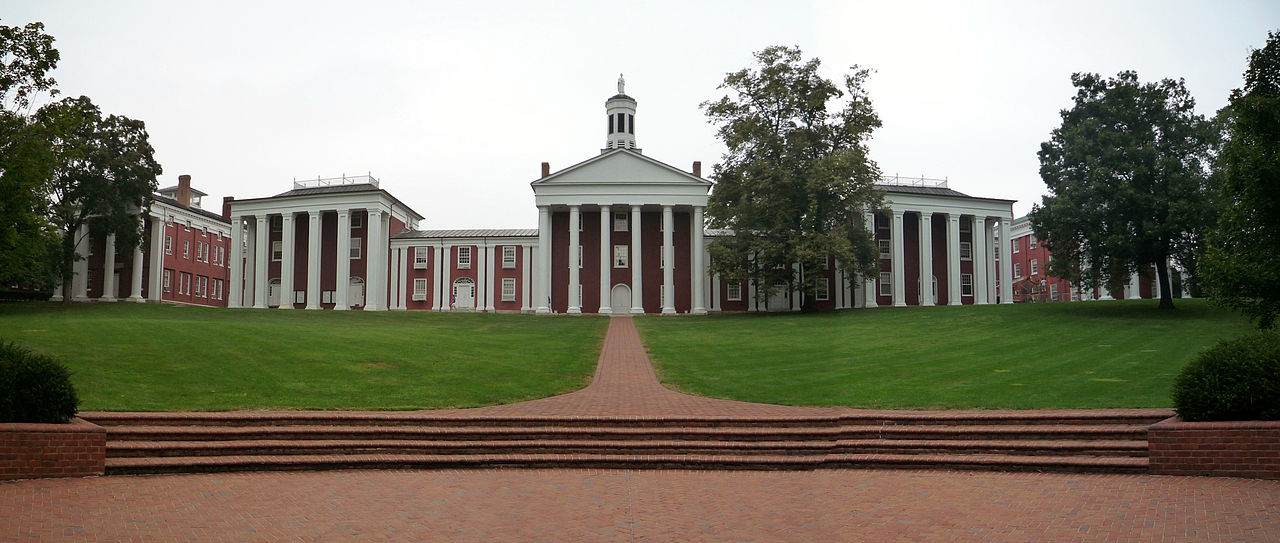 Washington and Lee University is named after George Washington, who gave a generous $20,000 endowment to the school in in 1796, and Robert E. Lee, who was a college president following the Civil War until his death. Located in historic Lexington, VA, 180 miles southwest of Washington, D.C., Washington and Lee University has two undergraduate divisions: the College, and the Williams School of Commerce, Economics, and Politics which are in the first tier of the U.S. News & World Report’s rankings for national liberal arts colleges. W&L’s Johnson Scholarship provides full-tuition, room-and-board scholarships without loans each year to up to 44 of the most exceptionally qualified students, regardless of their family’s financial circumstances. With an average net price of only $18,788, attending the ninth oldest institution of higher learning in the United States and the second oldest in Virginia is attainable.
Washington and Lee University is named after George Washington, who gave a generous $20,000 endowment to the school in in 1796, and Robert E. Lee, who was a college president following the Civil War until his death. Located in historic Lexington, VA, 180 miles southwest of Washington, D.C., Washington and Lee University has two undergraduate divisions: the College, and the Williams School of Commerce, Economics, and Politics which are in the first tier of the U.S. News & World Report’s rankings for national liberal arts colleges. W&L’s Johnson Scholarship provides full-tuition, room-and-board scholarships without loans each year to up to 44 of the most exceptionally qualified students, regardless of their family’s financial circumstances. With an average net price of only $18,788, attending the ninth oldest institution of higher learning in the United States and the second oldest in Virginia is attainable.
8) Vassar College
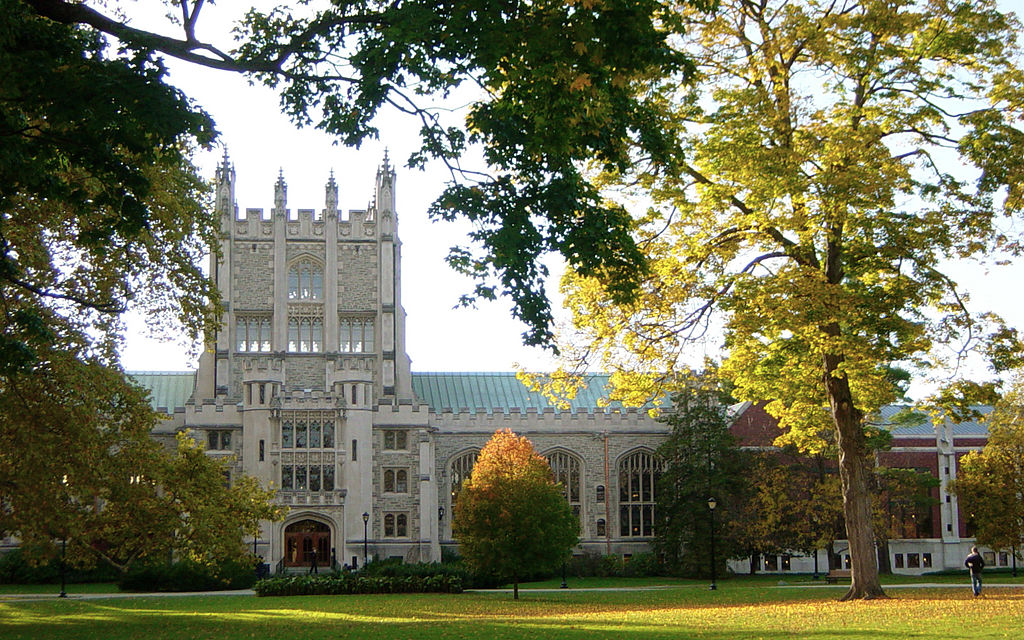 Vassar was one of the first historically women’s colleges in the northeast, but in 1969 the the formal decision to become coeducational came after its trustees declined an offer to merge with Yale University, its sibling institution. Vassar offers a student/faculty ratio is 8:1 and an average class size of 17, with upper-level classes typically much smaller. In every discipline, there are opportunities for student-faculty collaboration on original research, frequently resulting in publication in scholarly journals. Vassar adheres to a need-blind admission policy for all first-year students, which insures all admission decisions for applicants are made without regard to their financial situation. Vassar’s average net price is one of the lowest at $18,934 of our top 50 liberal arts colleges.
Vassar was one of the first historically women’s colleges in the northeast, but in 1969 the the formal decision to become coeducational came after its trustees declined an offer to merge with Yale University, its sibling institution. Vassar offers a student/faculty ratio is 8:1 and an average class size of 17, with upper-level classes typically much smaller. In every discipline, there are opportunities for student-faculty collaboration on original research, frequently resulting in publication in scholarly journals. Vassar adheres to a need-blind admission policy for all first-year students, which insures all admission decisions for applicants are made without regard to their financial situation. Vassar’s average net price is one of the lowest at $18,934 of our top 50 liberal arts colleges.
Average net price: $18,934
Average starting salary: PayScale.com
7) Colgate University
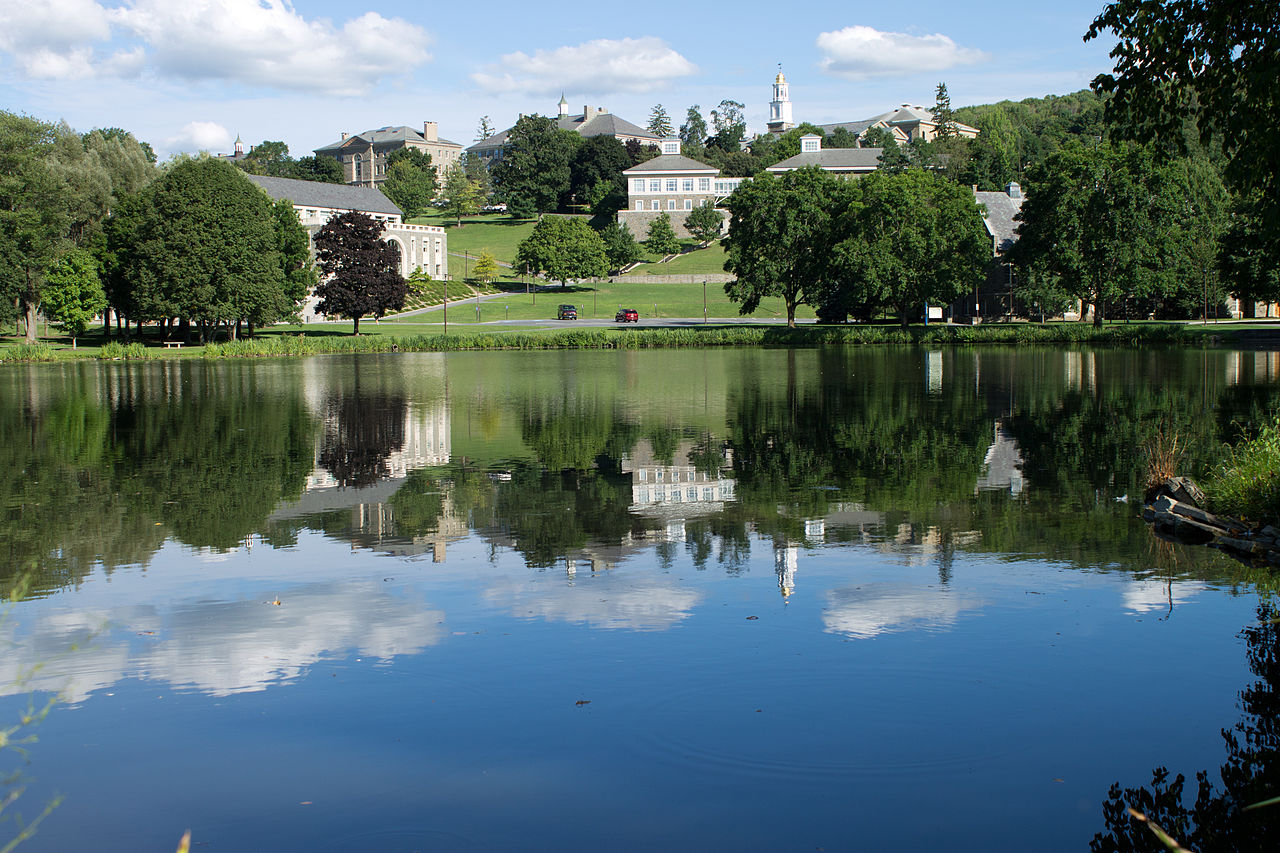 Rated the Most Beautiful Campus by The Princeton Review 2015, Colgate is located in Hamilton, NY, a small town where the undergraduate enrollment of 2,871 doubles the population. Colgate’s undergraduates study abroad at a rate of about two-thirds, which is a high proportion compared to other colleges and universities in the United States. Students who think they cannot afford a private, highly selective liberal arts college such as Colgate, should know that the school is committed to meeting 100 percent of the demonstrated need of accepted students. A recent fundraising campaign generated an additional $141 million exclusively for financial aid so that 35.8 percent of full-time undergraduates receive some kind of need-based financial aid and the
Rated the Most Beautiful Campus by The Princeton Review 2015, Colgate is located in Hamilton, NY, a small town where the undergraduate enrollment of 2,871 doubles the population. Colgate’s undergraduates study abroad at a rate of about two-thirds, which is a high proportion compared to other colleges and universities in the United States. Students who think they cannot afford a private, highly selective liberal arts college such as Colgate, should know that the school is committed to meeting 100 percent of the demonstrated need of accepted students. A recent fundraising campaign generated an additional $141 million exclusively for financial aid so that 35.8 percent of full-time undergraduates receive some kind of need-based financial aid and the
Average financial aid package from Colgate is $36,186. The number 13 is considered to be lucky to Colgate, alumni wear Colgate apparel on every Friday the 13th, which is designated as Colgate Day.
Average net price: $19,384
Average starting salary: PayScale.com
6) Middlebury College
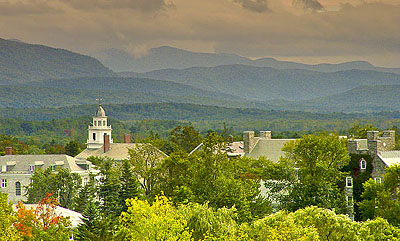 Located in central Vermont, Middlebury has established itself as a leader in campus environmental initiatives, with an accompanying educational focus on environmental issues around the globe. Founded in 1800, Middlebury continually seeks to create and sustain an environment on campus that is conducive to learning and that fosters engaged discourse. Middlebury follows a 4–1–4 academic calendar, with two four-course semesters and a one-course January term. In 1823 Middlebury became the first American institution of higher education to grant a bachelor’s degree to an African-American, and is also one of the first formerly all-male liberal arts colleges in New England to become a coeducational institution, accepting its first female student in 1883. At Middlebury College, 41 percent of full-time undergraduates receive some kind of need-based financial aid, with an average financial aid package being $33,226.
Located in central Vermont, Middlebury has established itself as a leader in campus environmental initiatives, with an accompanying educational focus on environmental issues around the globe. Founded in 1800, Middlebury continually seeks to create and sustain an environment on campus that is conducive to learning and that fosters engaged discourse. Middlebury follows a 4–1–4 academic calendar, with two four-course semesters and a one-course January term. In 1823 Middlebury became the first American institution of higher education to grant a bachelor’s degree to an African-American, and is also one of the first formerly all-male liberal arts colleges in New England to become a coeducational institution, accepting its first female student in 1883. At Middlebury College, 41 percent of full-time undergraduates receive some kind of need-based financial aid, with an average financial aid package being $33,226.
Average net price: $23,824
Average starting salary: PayScale.com
5) Harvey Mudd College
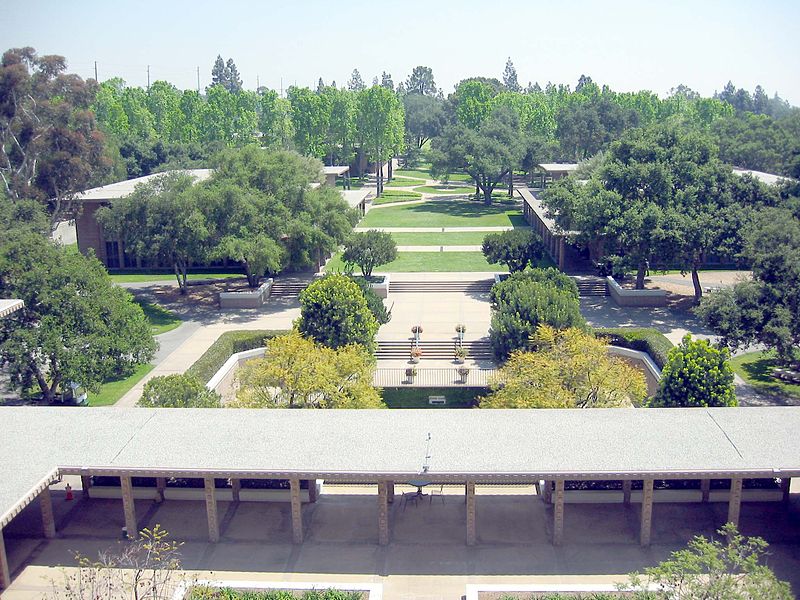 Harvey Mudd College aims to educate engineers, scientists, and mathematicians to better understand the impact of their work in society by also focusing on social sciences and humanities. Integration of research and education is an important component of the educational experience at Harvey Mudd College. Every student experiences some kind of research, usually in the form of a senior thesis or a Clinic Program, where students participate in collaborative, professional research with high-profile sponsors. Founded in 1995 in Claremont, California Harvey Mudd is residential college that is one of the six Claremont Colleges, which share adjoining campus grounds and resources such as libraries, dining halls, and health services. A Harvey Mudd education pays off, the
Harvey Mudd College aims to educate engineers, scientists, and mathematicians to better understand the impact of their work in society by also focusing on social sciences and humanities. Integration of research and education is an important component of the educational experience at Harvey Mudd College. Every student experiences some kind of research, usually in the form of a senior thesis or a Clinic Program, where students participate in collaborative, professional research with high-profile sponsors. Founded in 1995 in Claremont, California Harvey Mudd is residential college that is one of the six Claremont Colleges, which share adjoining campus grounds and resources such as libraries, dining halls, and health services. A Harvey Mudd education pays off, the
Average starting salary for graduates is $73,300 and according to PayScale, “graduates of Harvey Mudd College earn the highest salaries among graduates of any college in the United States.”
Average net price: $30,205
Average starting salary: PayScale.com
4) Pomona College
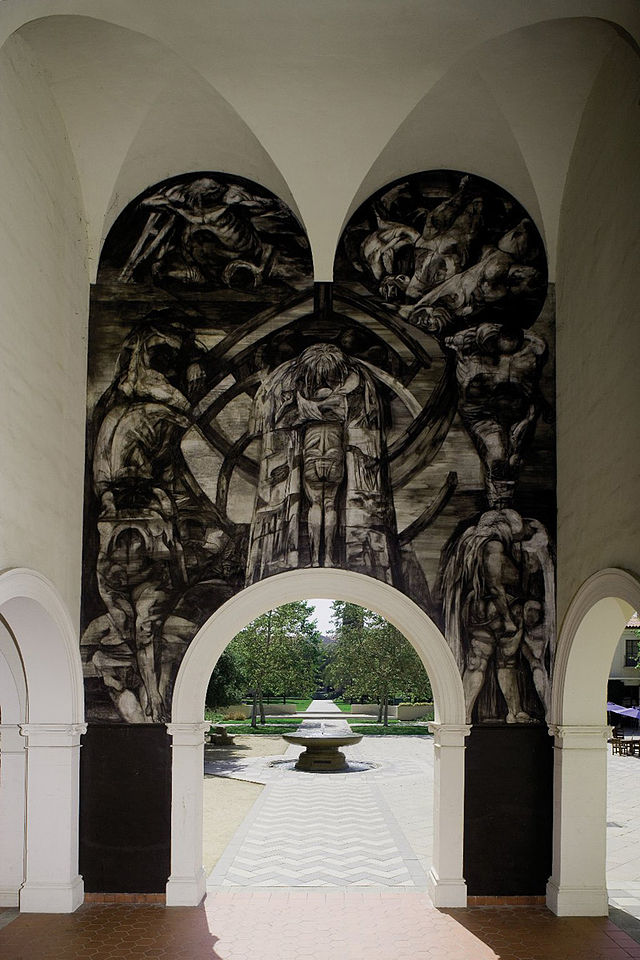 Pomona College is a premier liberal-arts college with a focus on the arts, humanities, social sciences, and natural sciences. Located in Claremont, California, east of downtown Los Angeles, Pomona is an exclusively undergraduate four-year institution with an enrollment of approximately 1,600 students. The Princton Review has ranked Pomona College No. 1 in the nation for “Great Financial Aid,” and calls Pomona, “the college at which students reported the highest satisfaction with their financial aid awards,” which results in the average net price being $18,112. The same review also ranked Pamona No. 4 in the categories “Their Students Love These Colleges” and “Best Run Colleges,” and No. 5 for “Best Science Lab Facilities.” Pomona offers around 45 majors and has a 8:1 student/faculty ratio. Pomona students can also take classes at the other six colleges in the Claremont Colleges consortium.
Pomona College is a premier liberal-arts college with a focus on the arts, humanities, social sciences, and natural sciences. Located in Claremont, California, east of downtown Los Angeles, Pomona is an exclusively undergraduate four-year institution with an enrollment of approximately 1,600 students. The Princton Review has ranked Pomona College No. 1 in the nation for “Great Financial Aid,” and calls Pomona, “the college at which students reported the highest satisfaction with their financial aid awards,” which results in the average net price being $18,112. The same review also ranked Pamona No. 4 in the categories “Their Students Love These Colleges” and “Best Run Colleges,” and No. 5 for “Best Science Lab Facilities.” Pomona offers around 45 majors and has a 8:1 student/faculty ratio. Pomona students can also take classes at the other six colleges in the Claremont Colleges consortium.
Average net price: $18,112
Average starting salary: PayScale.com
3) Williams College
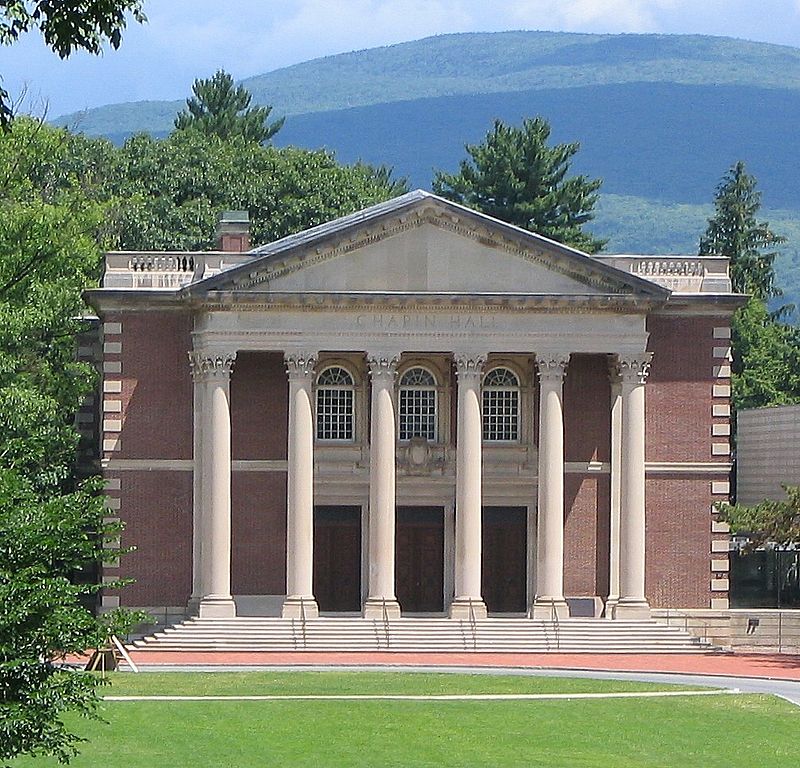 Within the Berkshire Mountains, in Williamstown, Massachusetts, you can find the private institution of Williams College. Williams ranks number one in 2014 for National Liberal Arts Colleges, boasting a student to teacher ratio of 7:1 and a 4 year graduation rate of 91 percent. Student participation is key to the schools Oxford-style tutorials. Students major in a core area of study and instead of academic minors, the school offers concentrations, groupings of classes that help to diversify the students learning experience. With three main areas of study, Williams students take at least three courses in arts and humanities, three in social sciences, and three in science and mathematics. At Williams College, 53.2 percent of full-time undergraduates receive some kind of need-based financial aid through need-based scholarships or grant awards leaving the average net price to attend Williams at only $17,365 (the lowest amount in our list of top 50 liberal arts schools) an amount that would be easily paid off with the school’s
Within the Berkshire Mountains, in Williamstown, Massachusetts, you can find the private institution of Williams College. Williams ranks number one in 2014 for National Liberal Arts Colleges, boasting a student to teacher ratio of 7:1 and a 4 year graduation rate of 91 percent. Student participation is key to the schools Oxford-style tutorials. Students major in a core area of study and instead of academic minors, the school offers concentrations, groupings of classes that help to diversify the students learning experience. With three main areas of study, Williams students take at least three courses in arts and humanities, three in social sciences, and three in science and mathematics. At Williams College, 53.2 percent of full-time undergraduates receive some kind of need-based financial aid through need-based scholarships or grant awards leaving the average net price to attend Williams at only $17,365 (the lowest amount in our list of top 50 liberal arts schools) an amount that would be easily paid off with the school’sAverage starting salary for students being $50,400.
Average financial aid: $39,776
Average net price: $17,365
Average starting salary: PayScale.com
2) Amherst College
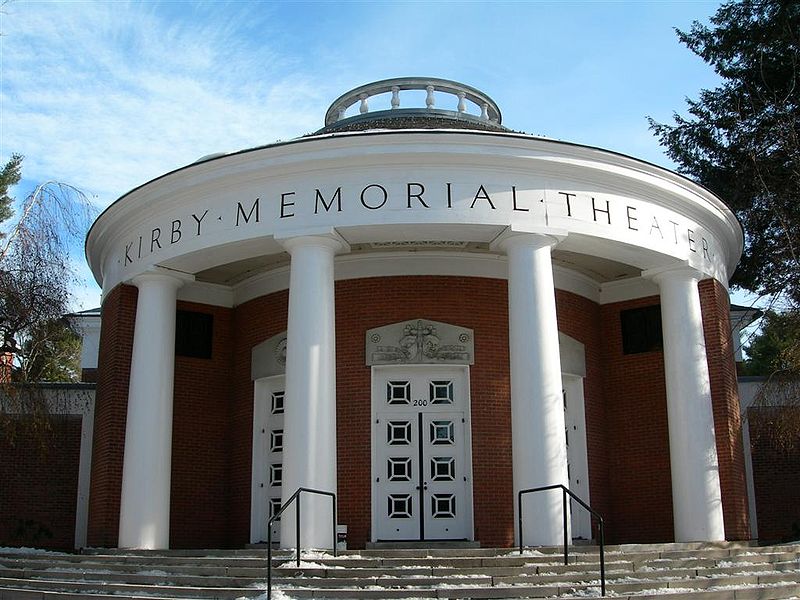 Amherst College has a total undergraduate enrollment of 1,817, a student-faculty ratio of 8:1, and a 4 year graduation rate of 86 percent. Amherst College, located in Amherst, MA, is an engaging, residential community where 98 percent of students live on campus every year. Amherst offers an open curriculum with 37 different areas of study. Twenty different First-year Seminars are designed to engage new students in the interdisciplinary environment of a liberal arts college. The academic and co-curricular communities at Amherst College are greatly enhanced by our membership in the Five College Consortium of Amherst College, Mount Holyoke College, Smith College, University of Massachusetts Amherst, and Hampshire College. Students can take classes at any of these schools. With tuition and fees being $46,574 (2013–2014) it nice to know that 55 percent of full-time undergraduates at Amherst College receive 100 percent of their need-based financial aid.
Amherst College has a total undergraduate enrollment of 1,817, a student-faculty ratio of 8:1, and a 4 year graduation rate of 86 percent. Amherst College, located in Amherst, MA, is an engaging, residential community where 98 percent of students live on campus every year. Amherst offers an open curriculum with 37 different areas of study. Twenty different First-year Seminars are designed to engage new students in the interdisciplinary environment of a liberal arts college. The academic and co-curricular communities at Amherst College are greatly enhanced by our membership in the Five College Consortium of Amherst College, Mount Holyoke College, Smith College, University of Massachusetts Amherst, and Hampshire College. Students can take classes at any of these schools. With tuition and fees being $46,574 (2013–2014) it nice to know that 55 percent of full-time undergraduates at Amherst College receive 100 percent of their need-based financial aid. Average financial aid: $34,876
Average net price: $22,022
Average starting salary: PayScale.com
1) Swarthmore College
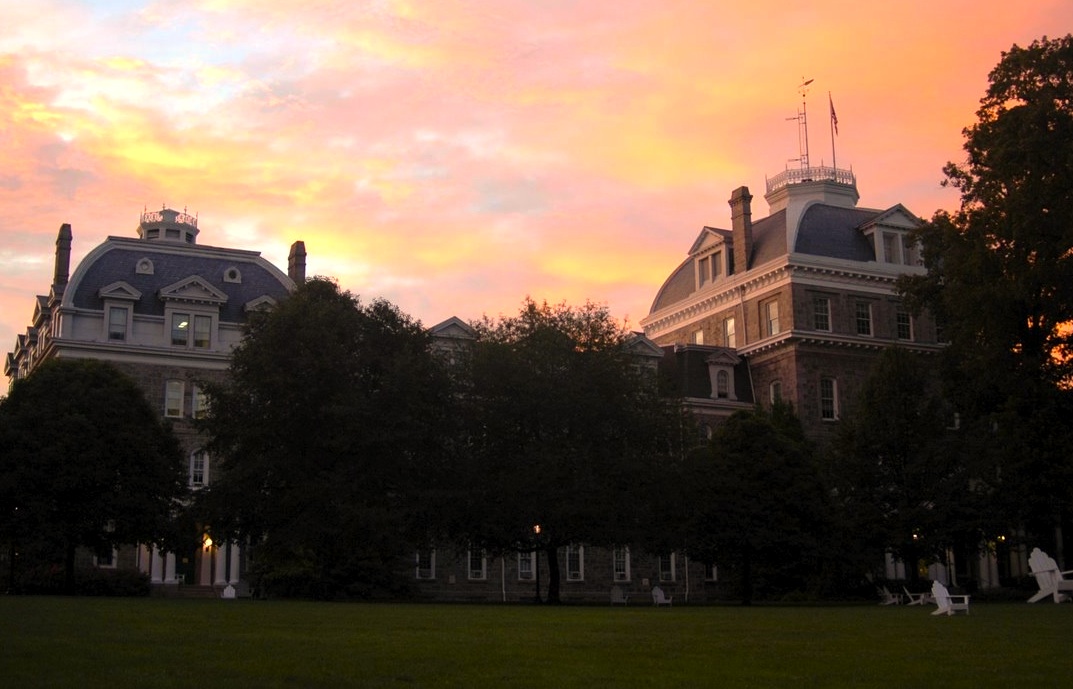 The Swarthmore College 425-acre campus is designated as an arboretum and is located just 11 miles southwest of Philadelphia. Founded in 1864, many of the founders were prominent in the abolitionist and women’s rights movements. Today the student/faculty ratio of 8:1 ensures that students have close, meaningful engagement with their professors, which helps to translate skills and understanding gained at Swarthmore into their future. The average starting salaries for Swarthmore graduates is $51,000. Swarthmore College is part of the Tri-College Consortium with Bryn Mawr and Haverford. Students have access to the consortium’s shared library system of more than three million volumes, and students can take courses at all three institutions. In addition to a liberal arts education, Swarthmore also offers a BS in engineering. Since U.S. News & World Report began to rank liberal arts colleges, Amherst, Williams, and Swarthmore are the only schools to have been ranked #1, with the three colleges often interchanging posistions in the top three.
The Swarthmore College 425-acre campus is designated as an arboretum and is located just 11 miles southwest of Philadelphia. Founded in 1864, many of the founders were prominent in the abolitionist and women’s rights movements. Today the student/faculty ratio of 8:1 ensures that students have close, meaningful engagement with their professors, which helps to translate skills and understanding gained at Swarthmore into their future. The average starting salaries for Swarthmore graduates is $51,000. Swarthmore College is part of the Tri-College Consortium with Bryn Mawr and Haverford. Students have access to the consortium’s shared library system of more than three million volumes, and students can take courses at all three institutions. In addition to a liberal arts education, Swarthmore also offers a BS in engineering. Since U.S. News & World Report began to rank liberal arts colleges, Amherst, Williams, and Swarthmore are the only schools to have been ranked #1, with the three colleges often interchanging posistions in the top three.
Average net price: $20,112
Average starting salary: PayScale.com
image courtesy of ratch0013/ FreeDigital Photos.net

